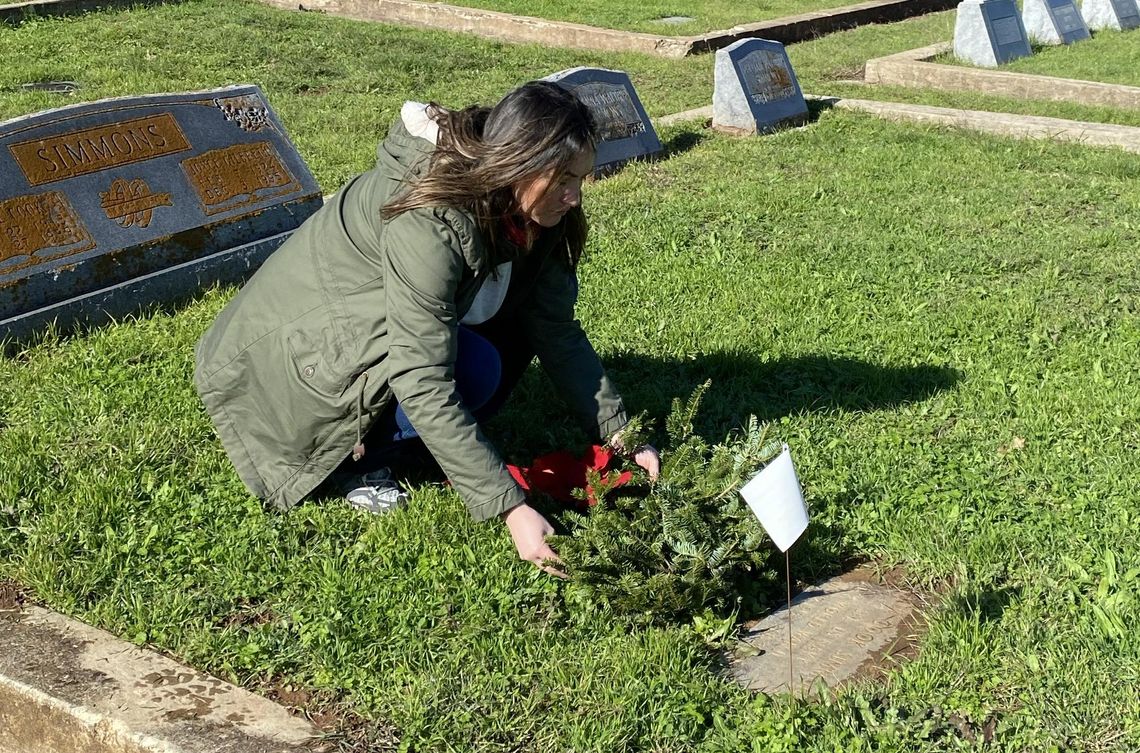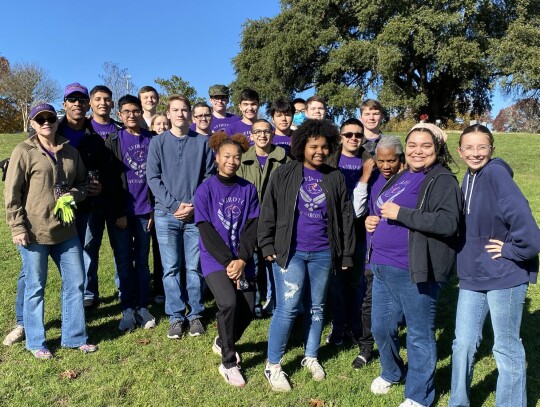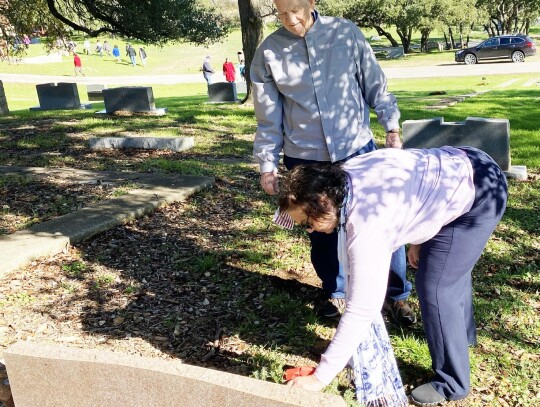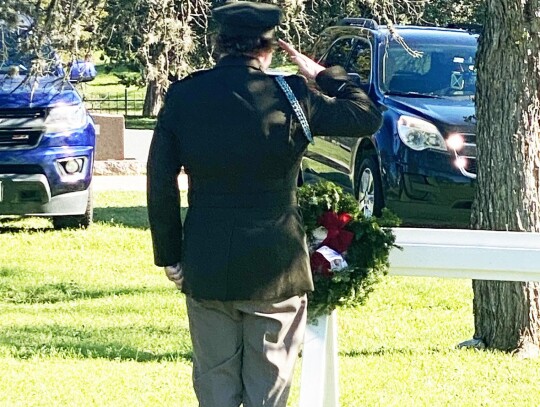Wreaths Across America honors veterans, teaches the next generation
San Marcos honored the veterans buried in its cemeteries this past weekend to ensure that their names and their bravery would not be forgotten. The annual Wreaths Across America, in which volunteers place wreaths at the base of military headstones, was kicked off on Dec. 16 at San Marcos City Cemetery, located on 1001 Old Ranch Rd. 12 with a ceremony spearheaded by Lisa Morris and featuring many key figures in the community, including San Marcos Mayor Jane Hughson.
During the ceremony, a wreath was placed for each branch of the military, by a veteran of that faction, as well as for those whose last known status was Prisoner of War or Missing in Action. Hays County Veterans Service Officer Jude Prather participated in the event and placed a wreath for those that had served or are serving in the U.S. Army.
After the ceremony, volunteers took to placing wreaths at the base of the headstone of those that had served the nation.
“We encourage every volunteer here today who places a wreath on the veterans grave to take a moment to thank them for serving our country. It’s a small act that goes a long way to keeping the memory of our veterans alive,” Maurice T. Suttles VFW Post 3413 Commander Stephanie Brown said. “Each wreath is a gift of appreciation from a grateful America.”
Sharon Lawrence, a Wreaths Across America volunteer, has been conducting research on the many veterans located in the cemetery.
“That was part of why I started to do this because I understood the value of doing this to the families,” Lawrence said. “There are some of the veterans here that still have temporary grave markers … There’s others that are in unmarked graves.”
Lawrence unearthed many local veterans stories.
Leslie Cooper was a San Marcos native and veteran of World War I. During World War II, he wrote a daily column for the Record.
Charles T. Brown was a Prisoner of War of the Japanese for 3.5 years during World War II.
“What’s most amazing is that while he was a POW he wrote a number of poems which he kept in a jar buried in the prison yard,” Lawrence said. “He managed to retrieve it when the prison camp was liberated. The poems were published as Bars from Bilibid Prison in 1947.”
Charles T. Brown and Leonard Caldwell died a few weeks apart fighting in the Pacific.
“They are buried side by side,” Lawrence said.
Her research led to the discovery of three Oliver brothers that served in WWII. Walter was killed during the war. William survived and later reenlisted for the Korean War.
“What saddens me is that — for some reason — William appears to be buried next to Walter in the family plot but there’s no grave marker for William,” Lawrence said, adding that she hopes a bit of publicity would lead to a relative of William Oliver applying for a free grave marker. “There’s several more citizens like that in the cemetery ... breaks my heart.”
Lawrence said she found that Lawrence Deaton’s grave showed the most moving love story.
“Lawrence died when his ship was torpedoed. Since he was lost at sea, there’s no body buried in the cemetery, just a memorial marker to him,” Lawrence said. “What was most touching was that when his wife Mildred died 40 years later, she was buried next to Lawrence’s memorial marker.”
Lawrence shared a story of a veteran couple that married then both enlisted in the war, Charles and Maxine Talley.
“Although there are several sets of couples that both served, they all met during [or] married after the war,” Lawrence said. “Leslie Cooper made mention of the Talleys bumping into each other in Naples.”
Lawrence said in the Guerrero family, with a plot located in section Ramsay B1 of the cemetery, each of the men and one of the women served.
“On Memorial and Veterans Days when they have American flags in place, it’s a heartwarming site to behold,” Lawrence said.
The federal government provides free grave markers for veterans. To learn more go to va.gov/burials-memorials/ memorial-items/headstones- markers-medallions.











